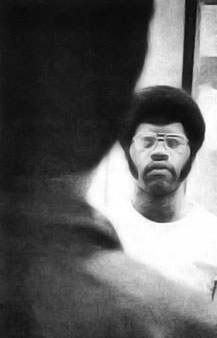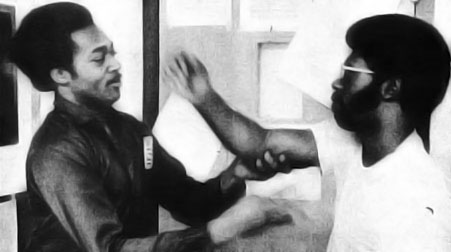Drug Program Tries To Eliminate Need

Article:
January 3, 1975
Staff Photos by Don Glickstein
Drug Program Tries To Eliminate Need
by Don Glickstein
Staff Writer
SMYRNA - “As long as there is a market for drugs, drugs will be in the country.”
Rick Upshur raised his voice a little.
“There will be pushers as long as there are addicts.”
He paused.
“We have a program that can stop people from becoming addicts.”
The program is Narconon, and Rick Upshur, an inmate at Delaware Correctional Center near Smyrna, is vice chairman of it.
Funded with a $22,000 federal grant, the 28 ex-addicts in Narconon follow a highly structured program designed to improve their communication skills and, hopefully, their ability to cope with life.
“The cause of the (drug) program is the guys’ inability to deal with life,” explained Narconon administrator Jack Malahauski.

Photo Caption
Narconon participants Francis Brooks (foreground) and Rick Upshur demonstrate one of the early exercises in the program, designed to help each other until they become confident and comfortable with each other. The exercise is designed to help them confront other people and ultimately, their own problems. –>

|
|---|
| Narconon participants Francis Brooks (foreground) and Rick Upshur demonstrate one of the early exercises in the program, designed to help each other until they become confident and comfortable with each other. The exercise is designed to help them confront other people and ultimately, their own problems. |
Situations which most people take for granted are difficult to handle for addicts, Upshur said.
“Most of the guys here are here because they couldn’t communicate, they couldn’t confront situations,” he said.
The only way to stop drug abuse is to stop the drug market, Upshur continued, and Narconon tries to eliminate the reasons people have to take drugs.
A person begins Narconon by pairing off with another person and sitting in facing chairs, trying to feel comfortable in close proximity.
It may take hours, days or weeks before the people feel confident and comfortable enough to proceed to the next steps, according to Malahauski.
The program slowly works from forcing the person to confront his environment to controlling it.
In one exercise, one person orders another to turn around and walk the length of the room. The second person puts up token resistance.
Later exercises go into study skills and how a person can learn from and get what he wants from the environment.
Other parts of Narconon train participants to act as program leaders.
Throughout the program, there is continual close contact with other people.
How effective is the program?
Narconon, which is a national program, boasts that 85 per cent of its prison graduates remain out of trouble at least during their parole period.
In Delaware, Narconon is still in the process of compiling a survey of released participants - about 100 since it began in 1972- but the members say the program is successful.

Photo Caption
Francis Brooks (left) orders a resisting Rick Upshur to turn around and walk across the room in a Narconon exercise which is supposed to help the participants learn to control their environment. –>

|
|---|
| Francis Brooks (left) orders a resisting Rick Upshur to turn around and walk across the room in a Narconon exercise which is supposed to help the participants learn to control their environment. |
“We feel as though it works,” Upshur said. “Self-help is evident.”
Ex-cons who when through Narconon have a great ability to deal with problems of life, simply because they recognize problems as problems, Upshur said.
“One of the basic premises here is that a person has a problem in that he won’t confront the problem,” said Malahauski.
Narconon sends speakers to high schools to talk about drug abuse, and runs an occasional program at Delaware Youth Center.
More articles from 1975: